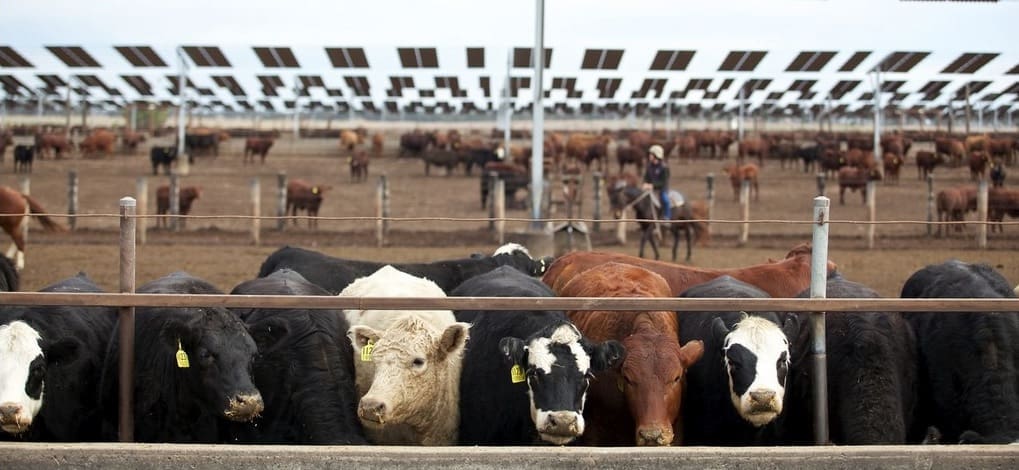
FEEDER cattle prices continue to be buffeted this month by a combination of heavier supply, limited demand and a softening trend in forward contract prices on 100-day grainfeds.
While continued rain has caused some considerable delivery challenges for feedlots looking to refill empty pens, many large commercial yards appear to have put the cue in the rack for the timebeing, having bought plentiful requirements of feeders before Easter.
That trend has been clearly evident in the saleyards channel, where lotfeeders have been noticeable for their absence since the latter stages of March.
Forward contract prices on 100-day grainfed ox 0-2 teeth from competitive Queensland grainfed processors are currently at 640-650c/kg for late July delivery, having continued to slide from contracts for May worth 700c/kg only a couple of months ago. July contracts in some cases are now filled.
The three-month 60c/kg decline in contracts represents a slide in value of around $220 on a typical 350kg grainfed steer carcase.
Paddock quotes on heavy flatback feeders ex Darling Downs were somewhat hard to source this morning, with plenty of yards not yet active again in the market after Easter. Best indications are that current prices are somewhere between 320c and 330c/kg.
Last week, a few yards had as much as 340c/kg available for prompt delivery, but that was partly ‘rain money incentive,’ having pre-committed cattle delivery pushed back due to weather, one contact suggested.
The most recent rain that’s fallen over the weekend may push some sense of urgency back into the buyer market again, one contact suggested.
“Every week that goes by when a feedlot does not top-up with new feeders, due to weather, tends to push some urgency into the equation,” he said.
Some larger multi-site feedlot operators are not offering quotes on paddock feeders at all this week, and haven’t done so since the back half of March – having bought a lot of cattle earlier.
“Whether it’s the Easter effect or other reasons, it’s all gone very, very quiet,” one large grainfed supply chain manager told Beef Central this morning.
“We’d been buying more than our exits during March, so we’ve had to step back for a while – especially as there’s been delivery delays due to rain,” one large grained supply chain manage told Beef Central.
He said a lot of those earlier steers had been bought at prices around 330-340c, making today’s market look a little cheaper.
“Everything’s come back since then – there’s just a few more suitable cattle about than what the market can really cater for.”
The NLRS feeder steer saleyards indicator was quoted this morning at 320.6c/kg, although that is based on relatively modest saleyards turnover of only 4100 eligible cattle over the past seven days.
There has been a degradation in heavy feeder cattle prices via the saleyards channel over the past two months, declining from around 357c/kg in early February to a low of 303c on March 19, before mounting a moderate 17c recovery through to this week.
This time last year, heavy feeders were still worth at least 40c/kg more than what they are today, while the early April market two years ago was still worth around 540c/kg.
Whether the recent feeder supply surge returns when more country starts to dry out after recent rain will now be of key interest.
Worldwide, beef consumers are showing signs of caution in discretionary spending due to economic uncertainty, and that is being reflected somewhat in grainfed beef demand. At the same time, there’s been a steady rise in Australian beef production over the first quarter this year.
While international beef trimmings markets have improved sharply over the past two months, grainfed boxed cuts are not yet producing the same jump in sell prices. One supply chain manager said forward contracts would have to drop to 630c/kg or less to produce any sizeable margin for grainfed processing, at current sell rates.
“That’s especially so while grassfed steer equivalent is currently making around 530-540c/kg – it’s a pretty big gap between grain and grass prices at present,” he said.
While feedgrain prices have continued to soften recently (see today’s feedgrain report), any larger yards which have taken a position in the grain market are still working their way through considerably more expensive rations, until closer to mid-year.
Anecdotally, a number of larger Darling Downs yards have added some extra numbers over the past couple of months, as part of long-term expansion.



HAVE YOUR SAY